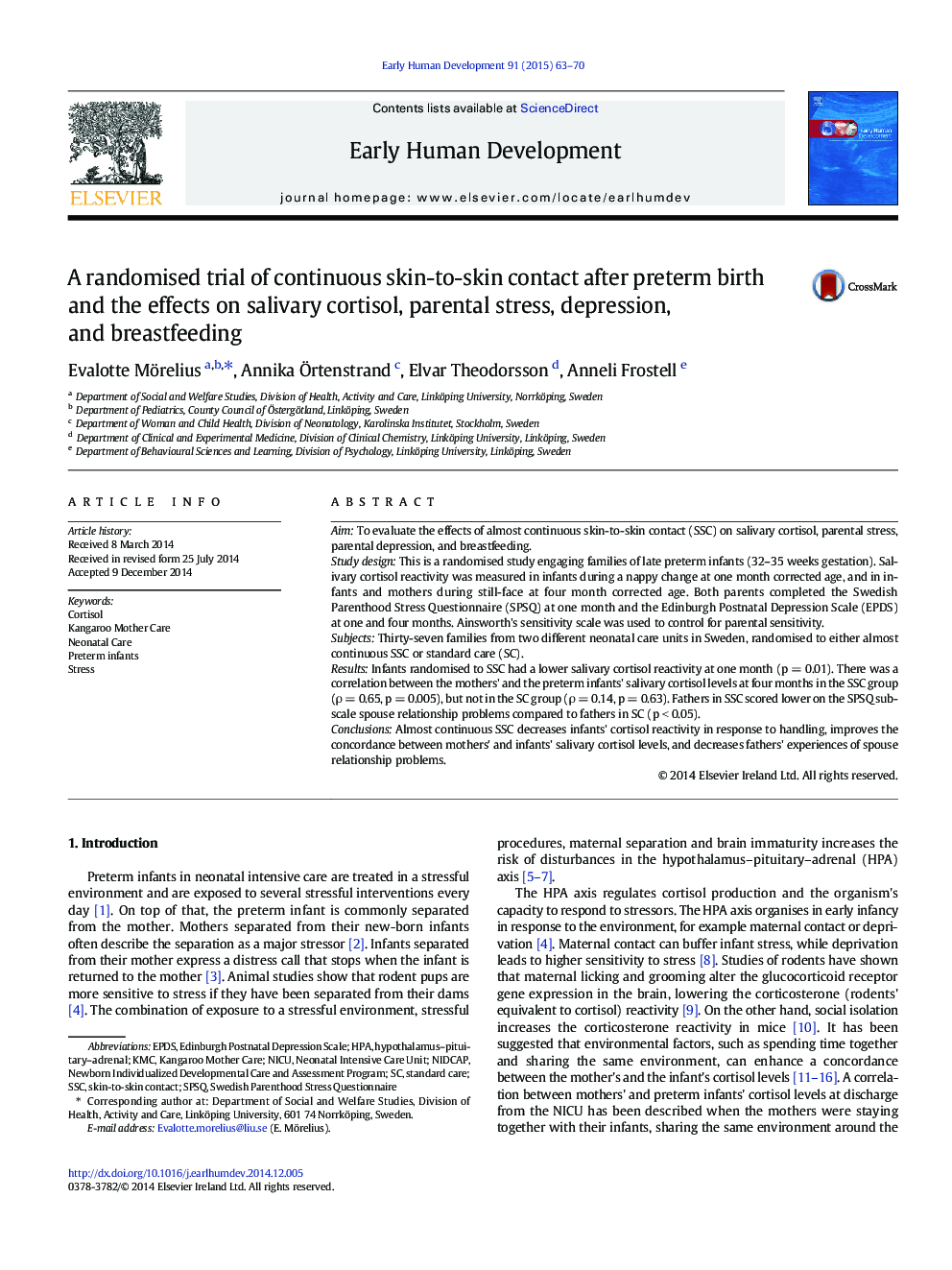| Article ID | Journal | Published Year | Pages | File Type |
|---|---|---|---|---|
| 3917958 | Early Human Development | 2015 | 8 Pages |
•This randomized study is the first to report results after continuous SSC for one week in a high-technology setting.•SSC decreased salivary cortisol reactivity and improved salivary cortisol concordance between mother and infant.•Fathers in SSC scored lower spouse relationship problems compared to fathers in standard care.•In order to succeed with almost continuous SSC both parents need to be involved in the care of the infant.
AimTo evaluate the effects of almost continuous skin-to-skin contact (SSC) on salivary cortisol, parental stress, parental depression, and breastfeeding.Study designThis is a randomised study engaging families of late preterm infants (32–35 weeks gestation). Salivary cortisol reactivity was measured in infants during a nappy change at one month corrected age, and in infants and mothers during still-face at four month corrected age. Both parents completed the Swedish Parenthood Stress Questionnaire (SPSQ) at one month and the Edinburgh Postnatal Depression Scale (EPDS) at one and four months. Ainsworth's sensitivity scale was used to control for parental sensitivity.SubjectsThirty-seven families from two different neonatal care units in Sweden, randomised to either almost continuous SSC or standard care (SC).ResultsInfants randomised to SSC had a lower salivary cortisol reactivity at one month (p = 0.01). There was a correlation between the mothers' and the preterm infants' salivary cortisol levels at four months in the SSC group (ρ = 0.65, p = 0.005), but not in the SC group (ρ = 0.14, p = 0.63). Fathers in SSC scored lower on the SPSQ sub-scale spouse relationship problems compared to fathers in SC (p < 0.05).ConclusionsAlmost continuous SSC decreases infants' cortisol reactivity in response to handling, improves the concordance between mothers' and infants' salivary cortisol levels, and decreases fathers' experiences of spouse relationship problems.
